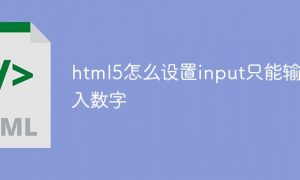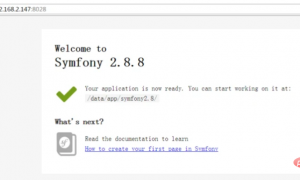
示例:在字符串 1000abcd123 中找出前后两个数字。
例子1:匹配到这个字符串的例子
package main import( "fmt" "regexp") var digitsRegexp = regexp.MustCompile(`(\d+)\D+(\d+)`) func main(){ someString:="1000abcd123" fmt.Println(digitsRegexp.FindStringSubmatch(someString))}
上面代码输出:
[1000abcd123 1000 123]
例子2:使用带命名的正则表达式
package main import( "fmt" "regexp") var myExp=regexp.MustCompile(`(?P<first>\d+)\.(\d+).(?P<second>\d+)`) func main(){ fmt.Printf("%+v",myExp.FindStringSubmatch("1234.5678.9"))}
上面代码输出,所有匹配到的都输出了:
[1234.5678.9 1234 5678 9]
这里的Named capturing groups (?P<name>) 方式命名正则表达式是 python、Go语言特有的, java、c# 是 (?<name>) 命名方式。
例子3:对正则表达式类扩展一个获得所有命名信息的方法,并使用它。
package main import( "fmt" "regexp") //embed regexp.Regexp in a new type so we can extend ittype myRegexp struct{ *regexp.Regexp} //add a new method to our new regular expression typefunc(r *myRegexp)FindStringSubmatchMap(s string) map[string]string{ captures:=make(map[string]string) match:=r.FindStringSubmatch(s) if match==nil{ return captures } for i,name:=range r.SubexpNames(){ //Ignore the whole regexp match and unnamed groups if i==0||name==""{ continue } captures[name]=match[i] } return captures} //an example regular expressionvar myExp=myRegexp{regexp.MustCompile(`(?P<first>\d+)\.(\d+).(?P<second>\d+)`)} func main(){ mmap:=myExp.FindStringSubmatchMap("1234.5678.9") ww:=mmap["first"] fmt.Println(mmap) fmt.Println(ww)}
上面代码的输出结果:
map[first:1234 second:9] 1234
例子4,抓取限号信息,并记录到一个Map中。
package main import( "fmt" iconv "github.com/djimenez/iconv-go" "io/ioutil" "net/http" "os" "regexp") // embed regexp.Regexp in a new type so we can extend ittype myRegexp struct{ *regexp.Regexp} // add a new method to our new regular expression typefunc(r *myRegexp)FindStringSubmatchMap(s string)[](map[string]string){ captures:=make([](map[string]string),0) matches:=r.FindAllStringSubmatch(s,-1) if matches==nil{ return captures } names:=r.SubexpNames() for _,match:=range matches{ cmap:=make(map[string]string) for pos,val:=range match{ name:=names[pos] if name==""{ continue } /* fmt.Println("+++++++++") fmt.Println(name) fmt.Println(val) */ cmap[name]=val } captures=append(captures,cmap) } return captures} // 抓取限号信息的正则表达式var myExp=myRegexp{regexp.MustCompile(`自(?P<byear>[\d]{4})年(?P<bmonth>[\d]{1,2})月(?P<bday>[\d]{1,2})日至(?P<eyear>[\d]{4})年(?P<emonth>[\d]{1,2})月(?P<eday>[\d]{1,2})日,星期一至星期五限行机动车车牌尾号分别为:(?P<n11>[\d])和(?P<n12>[\d])、(?P<n21>[\d])和(?P<n22>[\d])、(?P<n31>[\d])和(?P<n32>[\d])、(?P<n41>[\d])和(?P<n42>[\d])、(?P<n51>[\d])和(?P<n52>[\d])`)} func ErrorAndExit(err error){ fmt.Fprintln(os.Stderr,err) os.Exit(1)} func main(){ response,err:=http.Get("http://www.bjjtgl.gov.cn/zhuanti/10weihao/index.html") defer response.Body.Close() if err!=nil{ ErrorAndExit(err) } input,err:=ioutil.ReadAll(response.Body) if err!=nil{ ErrorAndExit(err) } body :=make([]byte,len(input)) iconv.Convert(input,body,"gb2312","utf-8") mmap:=myExp.FindStringSubmatchMap(string(body)) fmt.Println(mmap)}
上述代码输出:
[map[n32:0 n22:9 emonth:7 n11:3 n41:1 n21:4 n52:7 bmonth:4 n51:2 bday:9 n42:6 byear:2012 eday:7 eyear:2012 n12:8 n31:5]map[emonth:10 n41:5 n52:6 n31:4 byear:2012 n51:1 eyear:2012 n32:9 bmonth:7 n22:8 bday:8 n11:2 eday:6 n42:0 n21:3 n12:7]map[bday:7 n51:5 n22:7 n31:3 eday:5 n32:8 byear:2012 bmonth:10 emonth:1 eyear:2013 n11:1 n12:6 n52:0 n21:2 n42:9 n41:4]map[eyear:2013 byear:2013 n22:6 eday:10 bmonth:1 n41:3 n32:7 n31:2 n21:1 n11:5 bday:6 n12:0 n51:4 n42:8 emonth:4 n52:9]]
更多go语言知识请关注PHP中文网go语言教程栏目。
以上就是Go语言使用正则表达式提取网页文本的详细内容,更多请关注24课堂在线网其它相关文章!






